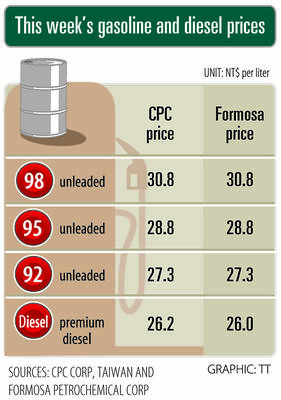Mic, a Web site aimed at millennials, used to employ 40 writers and editors producing articles on topics like “celebrating beauty” and “strong women.”
Ten were let go this month, with most in the revamped newsroom of 63 now focused on making videos for places such as Facebook.
Critics have called such moves “100 percent cynical” and out of sync with audience demand. Yet Americans are watching more video snippets online, either because they secretly like them or because they are getting harder to avoid.
The growing audience for video, more valuable to advertisers than the space next to words, is causing Web sites to shift resources in what has become known across the industry as the pivot to video.
“When you think about how many hours people spend watching video versus reading, the audience has already spoken,” Mic chief executive officer Chris Altchek said.
The outlet’s viewers spend 75 percent of their time with “visual” content like videos, not text, he said.
Americans are expected to spend 81 minutes per day watching digital video in 2019, up from 61 minutes in 2015, according to projections by research firm eMarketer.
Time spent reading a newspaper is expected to drop to 13 minutes per day from 16 minutes during the period. The question is whether those trends will sustain the growing number of outlets flooding social networks with video clips.
“It’s alarming,” eMarketer analyst Paul Verna said. “Publishers are throwing their hats into a ring that’s unproven.”
Dozens of writers and editors have also been laid off this summer at news outlets like Vocativ, Fox Sports, Vice and MTV News. All of the moves were tied in part to focusing more resources on making videos.
Publishers are heading in this direction even though polls show consumers find video ads more irritating than TV commercials.
Google and Apple Inc are testing features that let you mute Web sites with auto-play videos or block them entirely.
More young Americans prefer reading the news than watching it, according to a survey last year by the Pew Research Center.
However, many publishers have little choice. Facebook Inc and Google are vacuuming up the lion’s share of digital ad dollars, forcing news sites to find other ways to make money. Some media outlets are focusing on subscriptions. Others are getting into e-commerce.
However, those options take time to bear fruit. Video provides a quick infusion of revenue because advertisers are clamoring for it.
“No site is ‘pivoting to video’ because of audience demand,” Talking Points Memo publisher Josh Marshall tweeted last month. “They are pivoting to video because the industry is in the midst of a monetization crisis.”
Advertisers are willing to pay more to have their messages in videos because they think it is harder for people to ignore them.
Ad industry executives often refer to what is called “banner blindness,” or Internet users who overlook banner ads at the top of Web sites.
Video ad rates vary depending on their format. However, the spots can sell for as much as US$27 per thousand impressions, while display ads — think of the infamous belly fat ads — can go for just US$0.50 per thousand viewers or less, said Brian Mandelbaum, chief executive officer of Clearstream, which helps brands buy digital video advertising.
“Advertiser interest in video is insatiable,” said Jason Kint, chief executive officer of Digital Content Next, a trade association representing publishers, such as the New York Times, Business Insider and Bloomberg. “Any CFO is going to say: ‘How can we get more video?’”
Many publishers are hoping to replicate the success of Vice Media, which started out as a magazine and now makes TV programming, including a daily newscast for HBO and shows for its own cable network, Viceland.
After getting a US$450 million investment in June to make more video, Vice is said to be valued at US$5.7 billion — or twice the New York Times.
There is another reason why digital media companies are racing to churn out videos: They are trying to supply tech and media giants who are going after a piece of the US$206 billion US ad market.
Facebook, YouTube and Snap Inc want publishers to make videos for their platforms so they can woo advertisers away from television.
Publishers cannot ignore them because they rely heavily on social networks for their audience.
Mic, which gets about half its traffic from Facebook, is making more videos partly because it is Facebook’s priority, Altchek said.

SETBACK: Apple’s India iPhone push has been disrupted after Foxconn recalled hundreds of Chinese engineers, amid Beijing’s attempts to curb tech transfers Apple Inc assembly partner Hon Hai Precision Industry Co (鴻海精密), also known internationally as Foxconn Technology Group (富士康科技集團), has recalled about 300 Chinese engineers from a factory in India, the latest setback for the iPhone maker’s push to rapidly expand in the country. The extraction of Chinese workers from the factory of Yuzhan Technology (India) Private Ltd, a Hon Hai component unit, in southern Tamil Nadu state, is the second such move in a few months. The company has started flying in Taiwanese engineers to replace staff leaving, people familiar with the matter said, asking not to be named, as the

The prices of gasoline and diesel at domestic fuel stations are to rise NT$0.1 and NT$0.4 per liter this week respectively, after international crude oil prices rose last week, CPC Corp, Taiwan (台灣中油) and Formosa Petrochemical Corp (台塑石化) announced yesterday. Effective today, gasoline prices at CPC and Formosa stations are to rise to NT$27.3, NT$28.8 and NT$30.8 per liter for 92, 95 and 98-octane unleaded gasoline respectively, the companies said in separate statements. The price of premium diesel is to rise to NT$26.2 per liter at CPC stations and NT$26 at Formosa pumps, they said. The announcements came after international crude oil prices

SinoPac Financial Holdings Co (永豐金控) is weighing whether to add a life insurance business to its portfolio, but would tread cautiously after completing three acquisitions in quick succession, president Stanley Chu (朱士廷) said yesterday. “We are carefully considering whether life insurance should play a role in SinoPac’s business map,” Chu told reporters ahead of an earnings conference. “Our priority is to ensure the success of the deals we have already made, even though we are tracking some possible targets.” Local media have reported that Mercuries Life Insurance Co (三商美邦人壽), which is seeking buyers amid financial strains, has invited three financial

On Tuesday, US President Donald Trump weighed in on a pressing national issue: The rebranding of a restaurant chain. Last week, Cracker Barrel, a Tennessee company whose nationwide locations lean heavily on a cozy, old-timey aesthetic — “rocking chairs on the porch, a warm fire in the hearth, peg games on the table” — announced it was updating its logo. Uncle Herschel, the man who once appeared next to the letters with a barrel, was gone. It sparked ire on the right, with Donald Trump Jr leading a charge against the rebranding: “WTF is wrong with Cracker Barrel?!” Later, Trump Sr weighed